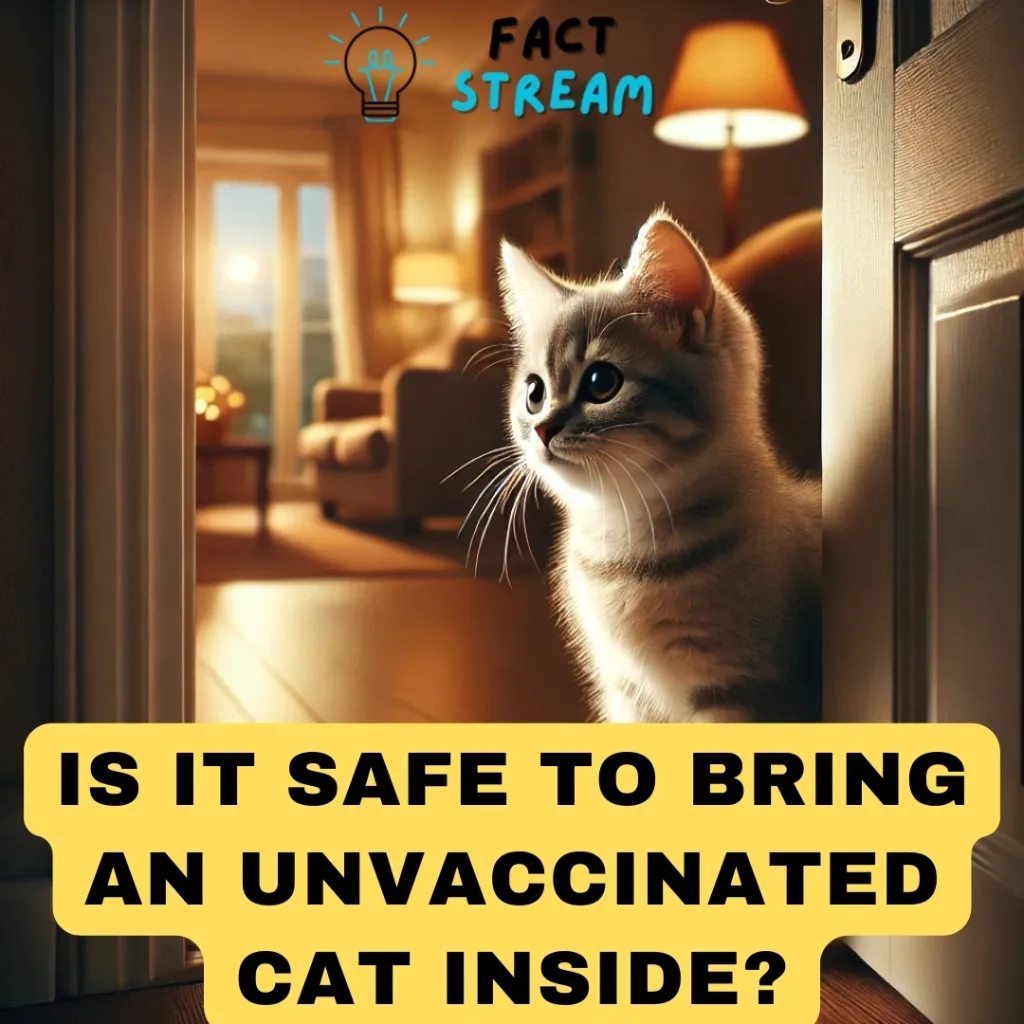Is It Safe to Bring an Unvaccinated Cat Inside?
Bringing a new cat into your home is always exciting. But if you have other cats, especially unvaccinated ones, you need to take precautions. Bringing an unvaccinated cat inside can put your existing cats at risk for a range of serious, potentially fatal, diseases.
Why Vaccination is Important for All Cats
Vaccines work by introducing a small, harmless piece of a virus or bacteria into your cat’s body. This triggers their immune system to develop antibodies, which will fight off the actual disease if they ever encounter it.
While outdoor cats are at higher risk of exposure to diseases, indoor cats are not immune. Viruses and bacteria can be carried into your home on your clothes, shoes, or even through open windows. Even insects can spread diseases to your indoor cat.
In addition to protecting your cat, vaccinations are often required by law, especially for rabies. Rabies is a fatal disease that can be transmitted to humans, so it’s crucial to protect both your cat and yourself.
Risks of Bringing an Unvaccinated Cat Inside
An unvaccinated cat can carry and spread diseases to other cats in your home. Here are some of the common and potentially deadly diseases your unvaccinated cat could transmit:
- Feline Distemper (Panleukopenia): This highly contagious virus can cause severe diarrhea, vomiting, dehydration, and even death, especially in kittens.
- Feline Herpesvirus and Calicivirus: These viruses are major causes of upper respiratory infections in cats. They can cause sneezing, nasal congestion, conjunctivitis, and mouth ulcers.
- Feline Leukemia Virus (FeLV): FeLV weakens the immune system and can lead to various forms of cancer. It’s mainly transmitted through saliva, but can also be spread through urine, feces, and milk.
- Rabies: This fatal disease attacks the nervous system and can be transmitted to humans.
- Bordetella (Kennel Cough): While more common in dogs, cats can also transmit bordetella, which causes a dry, hacking cough, fever, and nasal discharge. It can sometimes lead to life-threatening pneumonia.
- Parasites: Unvaccinated cats may also carry parasites like worms, which can be transmitted to other cats in your home.
What to Do Before Bringing an Unvaccinated Cat Inside
The safest course of action is to ensure any new cat entering your home is fully vaccinated. If you’re considering bringing an unvaccinated cat inside, talk to your veterinarian. They can assess the risks and advise you on the best course of action. Here are some steps to consider:
- Quarantine: Keep the new cat separated from your other cats for at least two weeks. This will give you time to observe them for any signs of illness. Choose an easy-to-clean space, like a bathroom, and designate separate clothes and shoes to wear when interacting with the new cat.
- Veterinary Checkup: Take the new cat to the veterinarian for a checkup and vaccinations as soon as possible. The veterinarian can also check for parasites and provide appropriate treatment.
- Vaccinate Your Existing Cats: Ensure your existing cats are up to date on their vaccinations, especially core vaccines. This will help protect them from diseases the new cat may be carrying.
Remember: It’s always best to err on the side of caution when introducing a new cat into your home. By taking the necessary precautions, you can help ensure all your feline companions stay healthy and happy.


